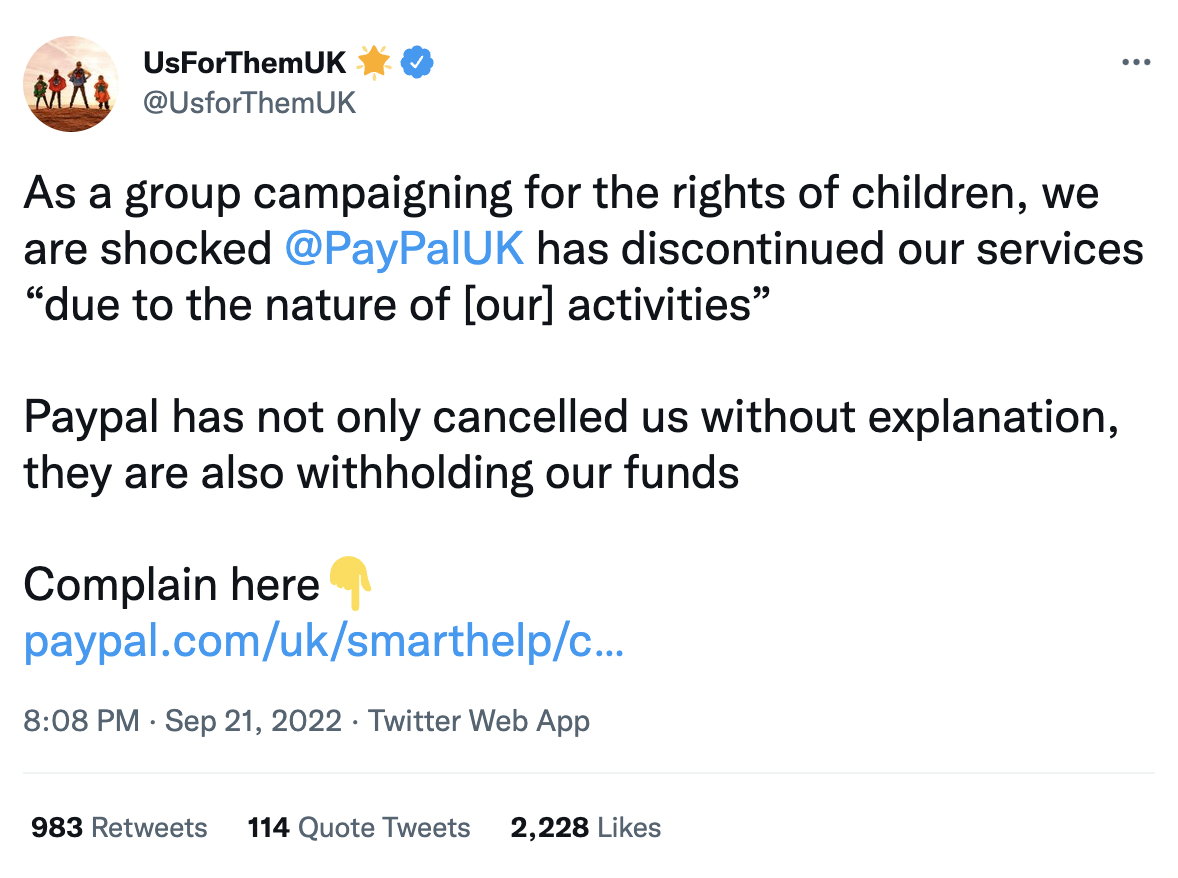Is Big Tech Intentionally Turning Kids Trans?
If you allow your kids to use big tech social media platforms, then this article from Jared Eckert at The American Conservative should be a wakeup call. Despite their willingness to reduce the spread of content that might encourage things like anorexia (and actually in many cases going way to far to the other direction such as promoting obesity), big tech seems not only unwilling to prevent kids from being subjected to trans content on their platforms; they are actively promoting it.
Here's a snippet from the article, but you should really check it out for yourself. Link is at the bottom.
In December 2000, the Atlantic published an exposé reminiscent of The Twilight Zone. Earlier that year, reports broke of a British surgeon who had amputated the healthy limbs of two patients. What author Carl Elliott found underneath these strange events was even more puzzling. A once rare condition—psychological distress over healthy limbs—was now plaguing thousands. How did this happen?
In his interviews with amputee-wannabes, Elliott discovered a common factor fueling what is now called Body Integrity Identity Disorder (BIID): the internet. For those with access, the internet provided a flood of information and social connections. Its disembodied, anonymous environment may have made the problem worse. The result? An ecological niche in which BIID could bloom.
That was 2000, when internet use was far less addictive and ubiquitous than it is today.
Since then, “new media”—the internet, smartphones, and social media—have spread almost perennial strains of body dysmorphia. By the mid-2010s, Tumblr’s image-saturated blogs were fueling pro-anorexia, or “pro-ana,” blogs. Today, TikTok is filling teens’ feeds with eating disorder content, and Instagram is causing body image issues for 1 in 3 teen girls.
There has been public outcry against these tech-fueled crazes in outlets like, well, the Atlantic. But the latest contagion has been ignored outside conservative media: rapid onset gender dysphoria. Worse, much of the left has celebrated the phenomenon in the name of “inclusivity,” “equality,” and—this month—“Pride.”
Like the amputee-wannabes of 2000 or anorexic teens of the 2010s, new media are fueling yet another form of teenage self-harm. Take Keira Bell, the young woman who won a United Kingdom High Court case against the gender clinic that fast-tracked her transition. Before the counselor’s office, clinic, or classroom, she was exposed to gender ideology on the internet.
Or consider Grace Lidinsky-Smith, who was featured on the 60 Minutes transgender report. Grace has traced her “gender journey” back to social media: “It all started when I got on Tumblr as a 13-year-old.” For Grace’s teenage self, virtual “friends” helped diagnose her anxiety and depression as symptoms of being born in the wrong body.
Helena Kirschner, a popular American detransitioner, has also shared how social media incubated her desire to transition. Like Grace, Helena’s transgender fantasy began on Tumblr, which she used “as an all-day alternate reality escape from the real world.”
The evidence of internet contagion extends beyond the anecdotal. Recent surveys find that most teens who transition are exposed, encouraged, and supported online. In one survey, 65 percent of those who transitioned cited online groups, forums, and/or social media as the biggest sources of help. Another survey found that YouTube, blogs, Tumblr, and online forums were the top sources that persuaded detransitioners to transition in the first place.
Much of this is a real-time experiment with tens of thousands of teenagers. But the harms of transitioning are already well documented. Transitioning, like cutting off a limb or starving oneself, has irreversible effects. It also fails to address the underlying problems driving gender dysphoria. Puberty blockers lead to bone-density problems. Cross-sex hormones sterilize. Removed breasts or ovaries can’t be replaced.
What’s more, the longest-term study on the subject finds that those who surgically transition are 19 times more likely to commit suicide than their peers. In contrast, the 5th edition of the American Psychiatric Association’s Diagnostic and Statistical Manual of Mental Disorders cites that, of youth struggling with gender dysphoria, 88 to 98 percent will reconcile with their biological sex if allowed to go through puberty.
Promo Code "PARALLEL" = 1 Free Month Subscription
Link:
https://www.theamericanconservative.com/articles/tech-and-trans-confusion/


















